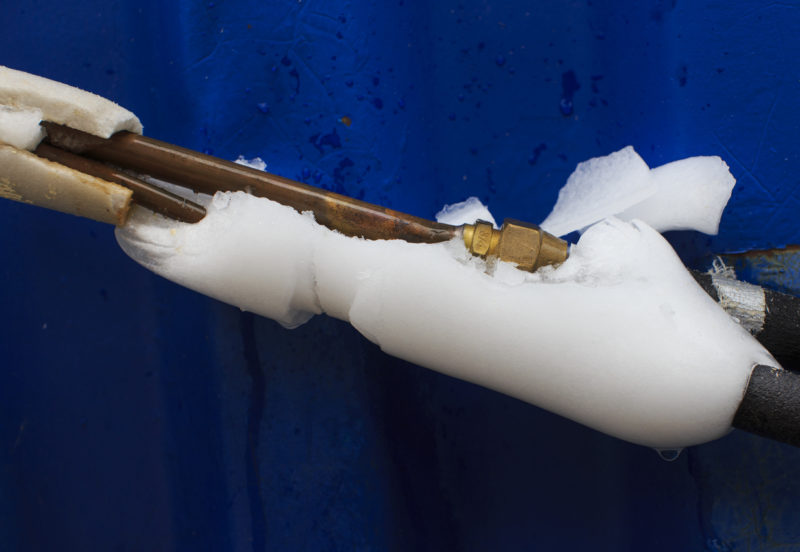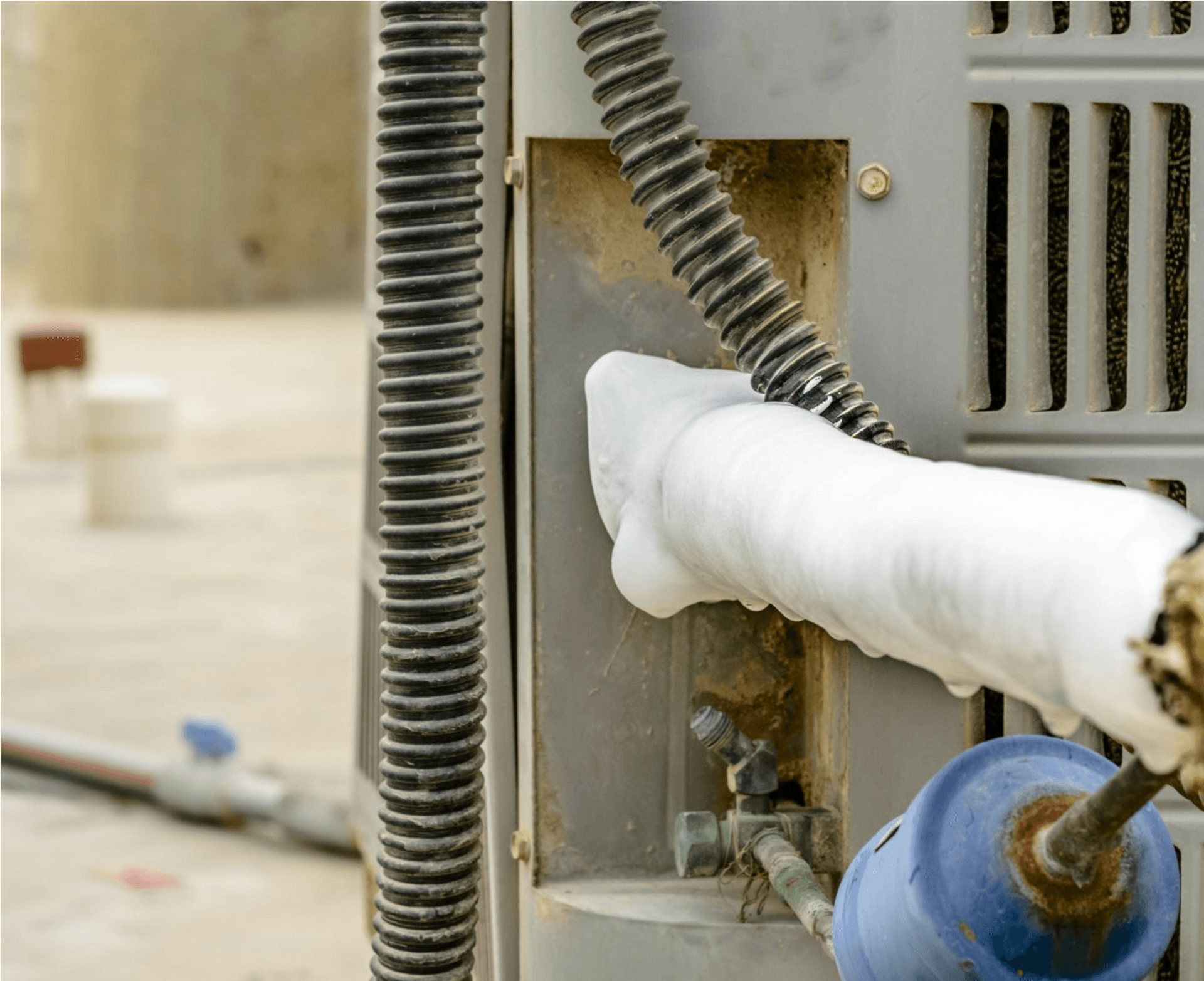Ways to Thaw Out a Frozen AC Pipe: Specialist Guidance
Ways to Thaw Out a Frozen AC Pipe: Specialist Guidance
Blog Article
We have encountered this great article involving How can I fix an air conditioner’s frozen pipe? down the page on the web and think it made perfect sense to write about it with you on this site.

Intro
Discovering that your air conditioning pipe is iced up can be concerning, especially throughout hot summer season when you rely on your ac unit one of the most. Understanding what to do in such a circumstance is crucial to stop further damage to your air conditioning system and ensure your comfort inside.
Comprehending the Causes
Several variables can add to the cold of an air conditioning pipe. Understanding these causes can help you address the problem effectively.
Absence of Airflow
One common root cause of a frozen air conditioner pipe is inadequate air movement. When the air flow over the evaporator coil is limited, it can trigger the coil to go down below freezing temperature, bring about ice formation on the pipeline.
Reduced Refrigerant Levels
Inadequate cooling agent levels in your air conditioner system can also lead to an icy pipe. Low cooling agent degrees can create the stress in the system to drop, resulting in the cold of dampness on the evaporator coil.
Winter Conditions
In cooler climates, freezing temperature levels outside can add to the freezing of air conditioning pipes. If your AC device is not effectively protected or if there are leaks in the ductwork, cool air can infiltrate the system, causing the pipe to freeze.
Dirty Air Filters
Unclean or stopped up air filters can restrict airflow in your AC system, causing different concerns, including a frozen pipe. It's necessary to change or cleanse your air filters regularly to make sure correct airflow and stop ice build-up.
Indicators of a Frozen Air Conditioning Pipe
Recognizing the signs of an icy air conditioning pipeline is critical for timely activity.
Minimized Airflow
If you discover a substantial reduction in air flow from your vents, it might show a frozen pipeline.
Ice Buildup on the Pipe
Noticeable ice accumulation on the cooling agent line or the evaporator coil is a clear indication of a frozen air conditioner pipe.
Unusual Sounds from the Unit
Uncommon sounds, such as hissing or bubbling, originating from your air conditioner unit can indicate that there's ice existing on the pipeline.
Immediate Actions to Take
When confronted with a frozen AC pipe, it's necessary to act promptly to avoid more damages to your cooling system.
Switching off the AC
The very first step is to turn off your a/c unit to prevent the system from running and worsening the issue.
Checking for Blockages
Check the location around the indoor device for any kind of obstructions that may be blocking air flow, such as furnishings or curtains.
Thawing the Pipe
You can utilize gentle techniques like positioning towels taken in cozy water around the icy pipeline to aid thaw it gradually.
Preventive Measures
Taking preventive measures can help stay clear of future events of an icy AC pipeline.
When DIY Methods Fail
If your efforts to thaw the pipeline or address other issues are not successful, it's time to hire a specialist.
Significance of Hiring a Professional HVAC Technician
A qualified HVAC specialist has the proficiency and devices needed to diagnose and fix concerns with your AC system safely and effectively.
Routine Maintenance Checks
Set up normal maintenance talk to a specialist HVAC specialist to make sure that your air conditioner system is running successfully.
Changing Air Filters
Routinely replace or clean your air filters to avoid air movement limitations and maintain optimal performance.
Shielding Exposed Pipes
If your a/c pipelines are subjected to cool temperatures, think about protecting them to prevent cold throughout winter season.
Looking For Professional Help
If DIY techniques fall short to deal with the issue or if you're uncertain about how to proceed, it's best to look for aid from a certified HVAC professional.
Verdict
Dealing with a frozen air conditioner pipeline can be a discouraging experience, however knowing just how to react can help decrease damage and restore comfort to your home. By recognizing the causes, identifying the indications, and taking prompt activity, you can effectively resolve the issue and protect against future occurrences.
What to Do If Your AC Line Is Frozen
Make Sure All Supply and Return Air Vents Are Open
If you notice problems with airflow, the first thing you should do is check your supply and return vents. Supply vents distribute clean, conditioned air throughout your home. As this air becomes stale, it’s pulled into the return vent, where it’s reconditioned before being sent back out through the supply vent.
When these vents are closed, air won’t flow in the home. Before examining your AC, check the vents in every room and ensure they’re all open.
Check for a Dirty Air Filter
Another possible cause of limited airflow is a dirty air filter. Your air conditioner’s filters catch elements you don’t want to breathe in, such as dirt and dust. Over time, filters can become clogged, ultimately blocking air from flowing in and out. The lack of airflow can then cause the entire coil to freeze and will completely restrict any air from moving through it. The AC may need to be powered off for one to two days to allow the coil to thaw after replacing the filter to allow proper functioning of the unit. This debris can also accumulate on your AC’s evaporator coil, requiring a more serious repair. In general, air filters should be cleaned regularly (about every two weeks).
Assess Your Outdoor Unit
In addition to checking your AC, assessing the outdoor unit is a good idea. Also known as the condensing unit, it works with your interior unit to release heat outside. An issue with the outdoor unit can result in rising internal temperatures.
Overgrown Shrubs or Clogged Leaves
From leaves and twigs to shrubs and debris, there’s no shortage of outdoor elements that can accumulate around your condensing unit. When these elements get lodged inside the unit, they can block airflow. Fortunately, removing the blockage can solve the problem.
Sounds of a Broken Fan
Shrubs and leaves aren’t the only things that can impede your outdoor unit’s airflow. If the fan is broken, the unit won’t be able to properly get rid of heat — which means the internal temperature won’t go down. First, make sure the fan is spinning. If it is, check for the following sounds of a broken fan:
Buzzing Rattling Screeching Hissing Clicking Preventative Measures
Nobody wants to deal with a frozen AC line. In addition to causing problems with your air conditioner, they require professional repairs. On the bright side, there are preventative measures you can take to help ensure this issue doesn’t arise in the first place.
https://www.coopergreenteam.com/blog/what-to-do-if-ac-line-frozen

I am just very eager about What Do I Do If My AC Pipe Is Frozen and I am assuming you appreciated our blog post. Sharing is nice. Helping others is fun. I treasure reading our article about What Do I Do If My AC Pipe Is Frozen.
Hire A Pro Report this page